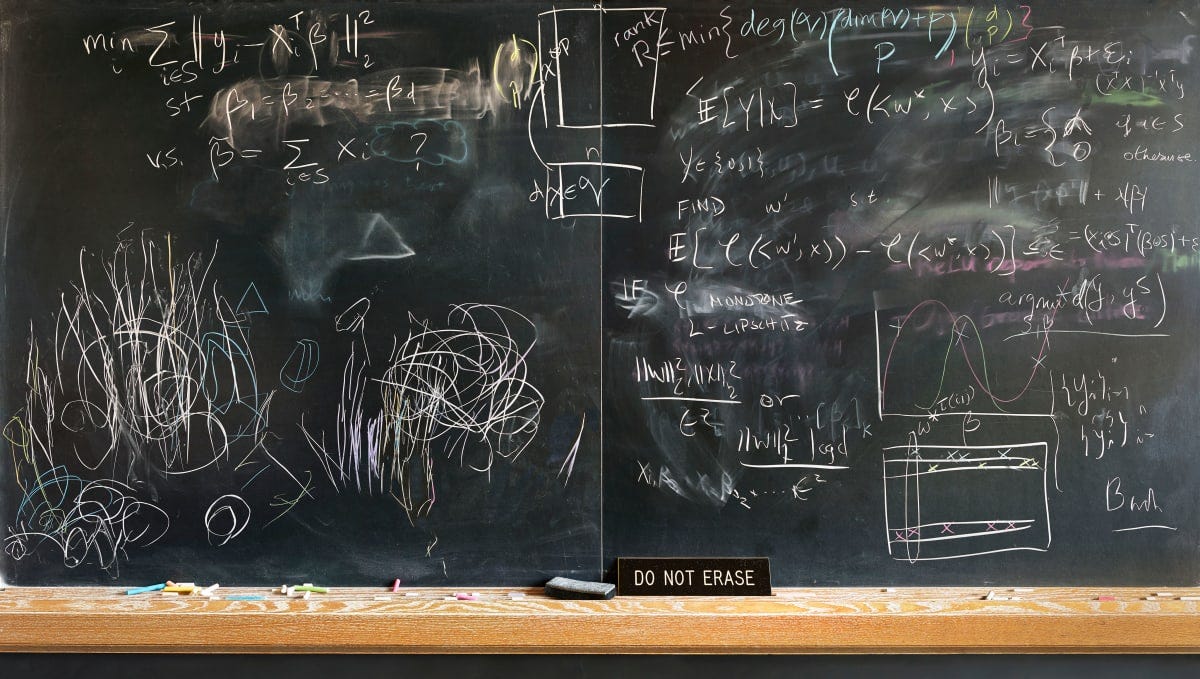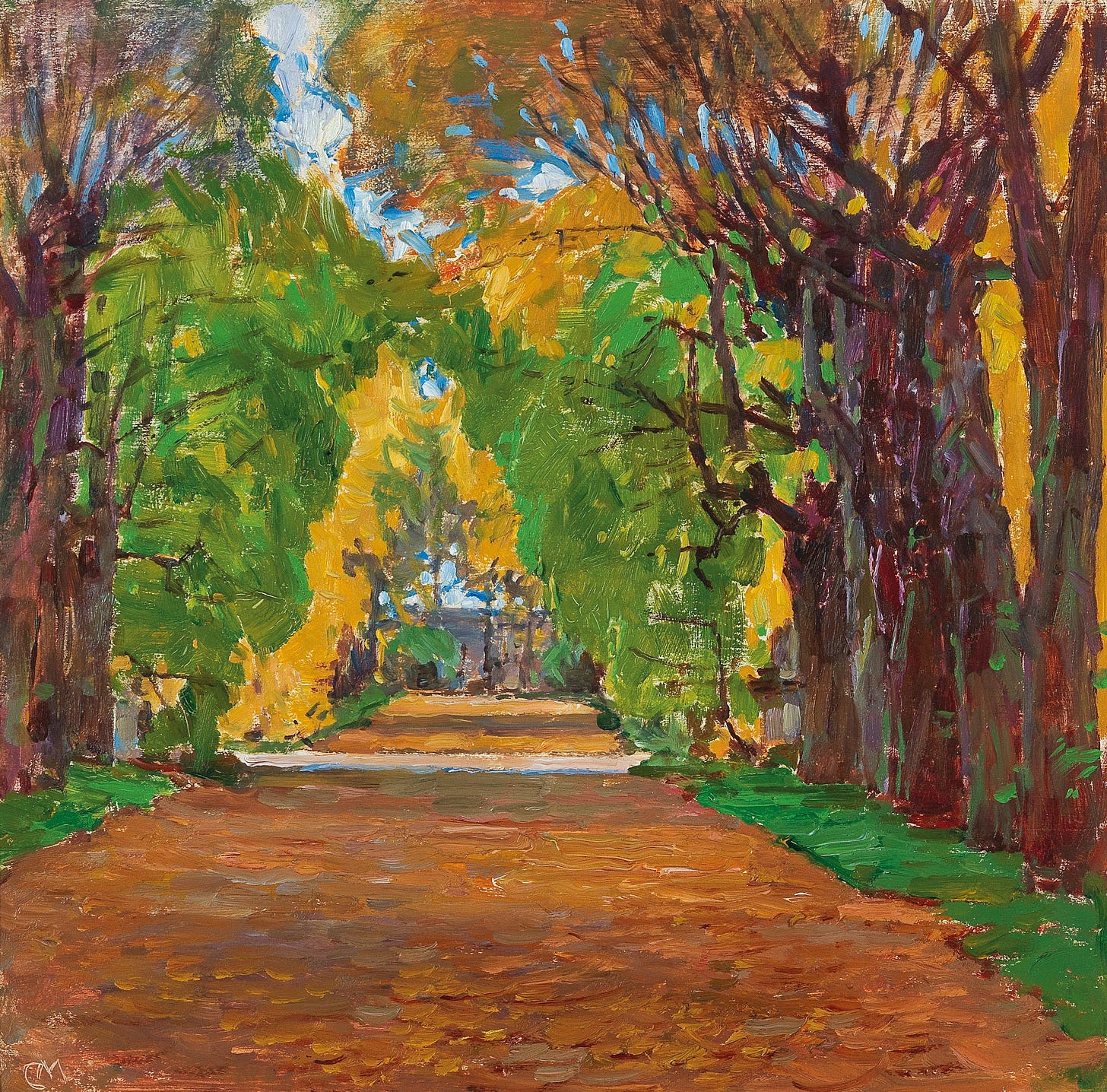English Teacher Weekly for Nov. 14th
Chalkboards, Tweedy, Silent Book Clubs, Speedy Writing, Modern Diapers, The Bible and Poetry, and a lot more!
Welcome to English Teacher Weekly! This is the 45th edition, and it is encouraging to see the ETW community continuing to grow. For our new subscribers, thank you for joining the club! Each week I bring you a sampler platter of what’s worth your attention from the worlds of literature, education, Christian thought, and the humanities. Hope you enjoy.
This week’s edition is for paid subscribers—a fitting thank you for keeping this project running. Next week we will be back to our regularly scheduled programming. Here’s a note about ETW’s subscription and content philosophy if you’d like to know more about it. For those of you traveling to NCTE this week, please pass along my regards to all those great English teachers descending upon Columbus, OH. And, listen, there’s no shame in skipping a session or two.
THE COLLECTION
Mathematicians and Their Blackboards

My childhood education saw the transition from the chalkboard to the whiteboard. I can remember the inimitable satisfaction of running a wet cloth over the dusty black surface, the muted tap of chalk against it, the sharp edge of a fresh piece of chalk slightly crumbling with its first marks. I can’t say I’d replace my whiteboards in my classroom, but I took some real comfort in knowing that there’s a place in academia where the blackboard still holds its humble ground—in the classrooms of mathematics departments at our elite universities. Enter the photography and essay collection Do Not Erase: Mathematicians and Their Chalkboards. Photographer Jessica Wynne traveled the country documenting these mathematicians’ works in progress, and the photos are accompanied by essays by the professors on their process. The effect is not unlike a Twombly painting.
From Roy Peachey’s review in Plough, “The Beauty of Chalk”:
But why chalkboards? Wouldn’t whiteboards do the job just as well? Aren’t chalkboards redundant in our high-tech world? Not according to Philippe Michel, who holds the chair of analytic number theory at the École Polytechnique Fédérale de Lausanne in Switzerland. Michel sets the tone for the whole book by explaining that “the very first thing I did when I arrived in my office in Lausanne ten years ago was to ask that the ugly whiteboard, with its smelly red pen, be replaced by a true chalkboard.” Chalkboards are easier on the eye than whiteboards, and while writing with chalk is slower than with a “smelly pen,” in this case slower may be better because it allows the reader time to process. Repeatedly, the mathematicians in this book expatiate on their love of chalkboards: “I couldn’t live without them,” says Benson Farb, professor of mathematics at the University of Chicago. It’s “an old friend,” says Gilles Courtois, director of research at CNRS, Institut de Mathématique de Jussieu. Étienne Ghys even convinced his wife to allow him to hang a chalkboard in their bedroom, though he did eventually agree to remove it when the amount of chalk dust on the sheets became unmanageable.
The Edwynn Houk Gallery has a collection of Wynne’s work here.
From their artist’s description:
For Wynne, the poetic and the rational are not mutually exclusive. While the formulas on each board are communicated in highly specialized languages from abstruse subfields such as knot theory, combinatorics, and ergodic theory, Wynne's work embraces the visual sensuality and intuitive impression of these complex calculations, linking them to the timeless lineage of artistry and writing: cave paintings, hieroglyphics, and graffiti.
Mathematicians "see images first, not words. They see pictures before meaning," Wynne observes. This relationship between image and thought is one of the primary areas of investigation for her work. It is striking that mathematicians, unlike many scientists, continue to work on chalkboards rather than computers, and Wynne's art explores the aspects of their communication that visual artists have shared throughout time: primal, intimate, and transcendent exchange.
Keep reading with a 7-day free trial
Subscribe to English Teacher Weekly to keep reading this post and get 7 days of free access to the full post archives.





